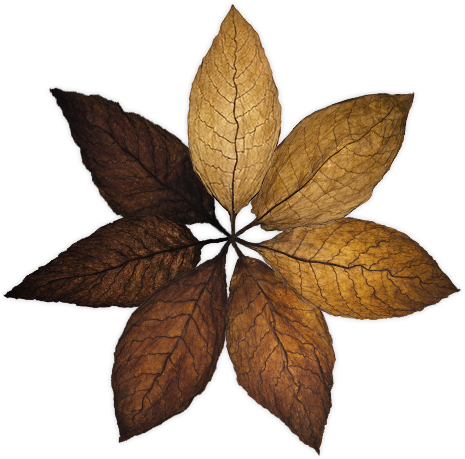It becomes more and more frequent to encounter cigars with a very dark wrapper. Some aficionados are really attracted by this color specificity, while others do not really appreciate such a dark capa. It is a matter of perception and taste. But a true natural maduro wrapper is really nice and specific, and the strong requirements of its demanding production unveil the real expertise of the producer.
More than just adding another stylish distinction to the cigar, a maduro wrapper – when produced with know-how and dedication – really brings something distinctive to the blend.

Generally talking, there are 3 ways to produce maduro wrappers.
1. The Painting
Some producers artificially darken the color of the wrapper with a solution that is generally produced by soaking fermented leaves’ stems.
2. The Cooking
During a voluntarily relatively uncontrolled fermentation of wrappers, the chain of internal leaves transformations will become more and more important. As a consequence, the leaves’ temperatures will quickly increase. When triggered and engaged, this phenomenon can occur so fast that it is called ‘quemar la capa’ in Spanish, literally ‘to burn the wrapper’. Such a production treatment is given to the leaves in order to achieve good combustibility and increased leaves’ darkening. Much time is ‘saved’ in realizing those 2 interesting characteristics but as a trade-off the aroma’s richness will be lost by rushing too much the reactions and not controlling the consequent thermal runaway.
3. The Natural way
Both fermentation temperature and evolution are here closely controlled. The temperature among the leaves in the fermentation unit (pilón) – necessary for the process to happen – is increased slowly thanks to a close control of the phenomenon by regular and numerous cycles of natural temperature increases of the leaves generated by the fermentation’s dynamic, and manual revolving of the fermentation units to avoid going over temperature thresholds by controlling the process’ speed.
Those cycles are done over a very long period, sometimes near to 4 times longer than normal wrappers. Hence a natural maduro fermentation, it is a ‘normal’ process (as it follows the same cycles and concepts) but with a much longer time of treatment and with a much closer control on temperature.
By producing a maduro wrapper of quality, we are in fact looking forward achieving 3 main characters: nice darkness in colors, interesting aromas, and good combustibility. Those antagonist parameters (1 and 2 versus 3) are very difficult to obtain in one same leaf.

The dark colors emerge after the drying (pro- cess modifying the green leaves into brown leaves) and the fermentation (process increasing the darkness of the leaves color and fixing it). The bigger the leaves’ organic fraction, the darker its color after the process. This is why a maduro wrapper must be thick. Agricultural leaves for nice colored maduro wrappers should be taken in high priming (high on the plant).
The dynamic of the aroma is pretty comparable to the one of the color: aromas come with the organic fraction of the leaves and are ‘released’ by good processes. Agricultural leaves for well aromatic maduro wrappers should be taken in high priming (high on the plant).
The burning quality comes mainly with the mineral fraction of the leaves. The closer from the soil, the bigger the mineral fraction of the leaves. Burning is more difficult if the leaves have high content in organic molecules, therefore so if they are aromatic and potentially dark in color. Agricultural leaves for nice combustible maduro wrappers should be taken in low priming (low on the plant).
It becomes obvious that having an optimal balance of those 3 parameters within a same leaf is pretty challenging and difficult. Agricultural leaves to pro- duce natural maduro wrappers must be pretty thick. They come from high priming where the organic fraction is important and the mineral fraction is small.
Having an important organic fraction as to become well-balanced maduro wrappers, thick leaves require a more intense fermentation than normal wrappers. This intensity must be more of a low speed over a long time than of a high speed over a short period. This biochemical process being more intense than for normal wrappers, temperatures generated must be more carefully controlled. If not, permanent damages could be caused to the aromatic molecules by the thermal runaway of the fermentation’s chain reactions.
Producing maduro wrappers – with even dark brown color, good aromas, and nice combustion – is excessively difficult to make as it is a real pro- cess challenge.
But as a just reward of the numerous efforts and the complete and balanced process, the tasting quality will be infinitely more satisfactory. The richness will be incomparable and very characteristic. It will be an explosion of scents.
Article taken from CigarsLover Magazine Issue 13

